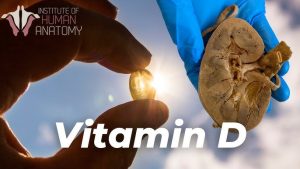
Vitamin D and Its Role in Bone Health
Vitamin D has long been regarded as a vital nutrient for maintaining bone health. It aids in calcium absorption, promotes bone mineralization, and supports overall skeletal integrity. For older adults, who are at increased risk of osteoporosis and fractures, Vitamin D has often been considered a cornerstone of prevention strategies. However, recent studies and expert opinions have raised questions about its effectiveness in preventing fractures or falls in this demographic.
Recent Findings and Expert Warnings
Emerging research suggests that Vitamin D supplementation alone may not significantly reduce the risk of fractures or falls among older adults. A series of large-scale randomized controlled trials and meta-analyses have provided mixed results:
- No Clear Reduction in Fractures: Studies like the VITAL trial (published in The New England Journal of Medicine) found that high-dose Vitamin D supplementation did not lead to a statistically significant reduction in hip fractures, vertebral fractures, or total fractures in healthy middle-aged and older adults.
- Limited Impact on Fall Prevention: Falls are a major concern for older adults due to the potential for serious injuries. While Vitamin D deficiency is associated with muscle weakness, correcting it through supplementation has not consistently shown to reduce fall rates. Some studies even suggest that excessive doses of Vitamin D might increase the risk of falls, possibly due to overcompensation and altered balance.
- Threshold Effects: For individuals with severe Vitamin D deficiency, supplementation can improve bone health and reduce fall risk. However, for those with adequate baseline levels, additional supplementation may offer little to no benefit.
Why the Discrepancy?
The lack of a clear benefit from Vitamin D supplementation in preventing fractures and falls can be attributed to several factors:
- Baseline Vitamin D Levels: Many older adults already have sufficient Vitamin D levels, either through diet, fortified foods, or sunlight exposure. Supplementation in these cases may not yield significant additional benefits.
- Calcium Intake: Vitamin D works in tandem with calcium to support bone health. Inadequate calcium intake may negate the potential benefits of Vitamin D supplementation.
- Complex Fall Dynamics: Falls are influenced by a range of factors, including muscle strength, balance, vision, medication use, and environmental hazards. Addressing Vitamin D levels alone may not be sufficient to prevent falls.
- Study Populations: Many trials focus on relatively healthy older adults, who may not be representative of those at the highest risk of fractures or falls, such as frail individuals or those in long-term care settings.
Expert Recommendations
In light of these findings, many experts and guidelines are reconsidering the routine use of Vitamin D supplements for fracture and fall prevention in older adults:
- Targeted Supplementation: Instead of widespread supplementation, a targeted approach is recommended. This includes identifying individuals with true Vitamin D deficiency (e.g., serum 25-hydroxyvitamin D levels below 20 ng/mL) or those with specific risk factors, such as osteoporosis, malabsorption syndromes, or limited sun exposure.
- Combined Interventions: For those at risk of fractures, interventions should focus on a combination of adequate calcium intake, physical activity (especially weight-bearing and balance exercises), and fall-prevention strategies, alongside Vitamin D supplementation if needed.
- Avoiding High Doses: Mega-doses of Vitamin D (e.g., >4,000 IU per day) are generally discouraged, as they may lead to adverse effects, including hypercalcemia and increased fall risk.
- Individualized Care: Healthcare providers should assess each older adult’s overall health, dietary intake, lifestyle, and specific risks before recommending Vitamin D supplementation.
Broader Implications
The recent findings underscore the importance of evidence-based approaches to supplementation. While Vitamin D remains essential for bone and muscle health, its role in preventing fractures and falls may have been overestimated. Public health messaging may need to shift from emphasizing universal supplementation to promoting balanced nutrition, active lifestyles, and comprehensive fall prevention strategies.



 DailyMediCure
DailyMediCure 









